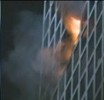
Chicago High-Rise Also Hit By Fatal Fire in 2002
This week's fire started in a unit on the 36th floor of the 51-story building. The 2002 fire on the 14th floor killed one person and caused criticism of the city for not requiring sprinklers in older residential towers.
The fire that killed an 84-year-old woman in a 36th-floor apartment of a 51-story Chicago condominium building this week, injuring five firefighters and seven other people in the process, was the second fatal fire in the history of that building, the Chicago Tribune reported today. The building at 260 E. Chestnut St., in the city's Streeterville neighborhood north of downtown, was constructed in the mid-1960s, the newspaper reported.
Chicago Fire Commissioner John Brooks said close to 300 emergency workers responded to this week's five-alarm blaze, evacuating the building, putting out the fire, and helping the injured on a night when temperatures were in single digits. Most of the residents who were injured in the building, named The Plaza on DeWitt, suffered smoke inhalation. The only fatality was Beata Bihl, 84.
The Tribune reported a 2002 fire on the building’s 14th floor also caused one woman’s death and several injuries. "After the 2002 death, safety advocates blasted the city for refusing to require sprinkler systems in residential high-rises built before 1975," the newspaper's story relates. "The building's condo board chose not to install sprinklers in private units because of the expense, but it does have an automated alarm system and sprinklers in common areas, residents said. Though the city has balked at tougher sprinkler laws for residential buildings in recent years because the costs would be absorbed by homeowners, it has given Chicago's oldest high-rise condominiums until 2012 to take alternate life-saving measures. The modifications could include communication systems, fire hoses and other backup equipment."